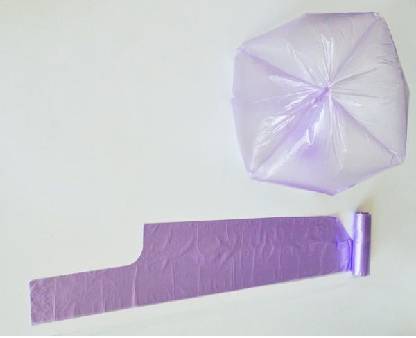Key Words: Biodegradable Bag, Garbage Bag, T-shirt Bag, Food Bags
The ubiquitous plastic products have facilitated people's lives, but the resulting plastic waste has caused a lot of pollution to the ecological environment. Biodegradable Bag Manufacturers have discovered that white
pollution caused by plastic products led by plastic bags is harming the natural
environment and people's normal lives step by step. Plastic is a synthetic
polymer chemical product. Most plastics are made from non-renewable petroleum as
raw materials, and are formed by polycondensation of polyols and polyacids.
Unlike other garbage, the decomposer microorganisms in the environment cannot
digest and degrade the chemical bonds connecting the monomers in the plastic, so
they cannot be decomposed into the monomer form again. In other words, once
plastics are synthesized, there is no “turn back".
To deal with "white pollution", in addition to building environmental awareness, reduce the use of disposable plastic products such as Biodegradable Bag. Another important method is to replace ordinary plastics with biodegradable bags. By optimizing the selection of production of raw materials and production processes, degradable plastics can be gradually decomposed into fragments under the combined action of several days or months of sunlight and rain and microorganisms, and eventually all degraded.

Hdpe Star-sealed Garbage Bag With Handle
Degradable materials can be generally divided into four categories: photodegradable plastics, biodegradable plastics, photo/biodegradable plastics, and water degradable plastics. Photodegradable plastics are photosensitizers mixed with plastics. Under the influence of sunlight, the plastics gradually decompose. But its disadvantage is that the degradation time is affected by sunlight and climate environment, so it cannot be controlled. Biodegradable plastics refer to plastics that can be decomposed into low molecular compounds under certain conditions by microorganisms present in nature, such as bacteria, molds, and algae. Such plastics are convenient for storage and transportation and have a wide range of applications. Light/biodegradable plastics are plastics that combine the dual characteristics of photodegradable plastics and biodegradable plastics, such as biodegradable bags. Water-degradable plastics are plastics that are soluble in water because of the addition of water-absorbing substances. With the development of modern biotechnology, biodegradable plastics have become a new hotspot in research and development.
At present, the biodegradable plastics researched and developed in my country are mainly biopolyesters such as polylactic acid (PLA), polyhydroxy fatty acid esters (PHA), and carbon dioxide copolymers (PPC). Polylactic acid (PLA) is polymerized from lactide monomers extracted from plant sugars, and can be completely degraded into water and carbon dioxide under industrial composting. Polyhydroxy fatty acid ester (PHA) is an aliphatic copolyester of different structures synthesized by microorganisms through various carbon source fermentations. It can be used not only in packaging materials, agricultural films, etc., but also in pharmaceuticals, cosmetics, Animal feed and other fields.